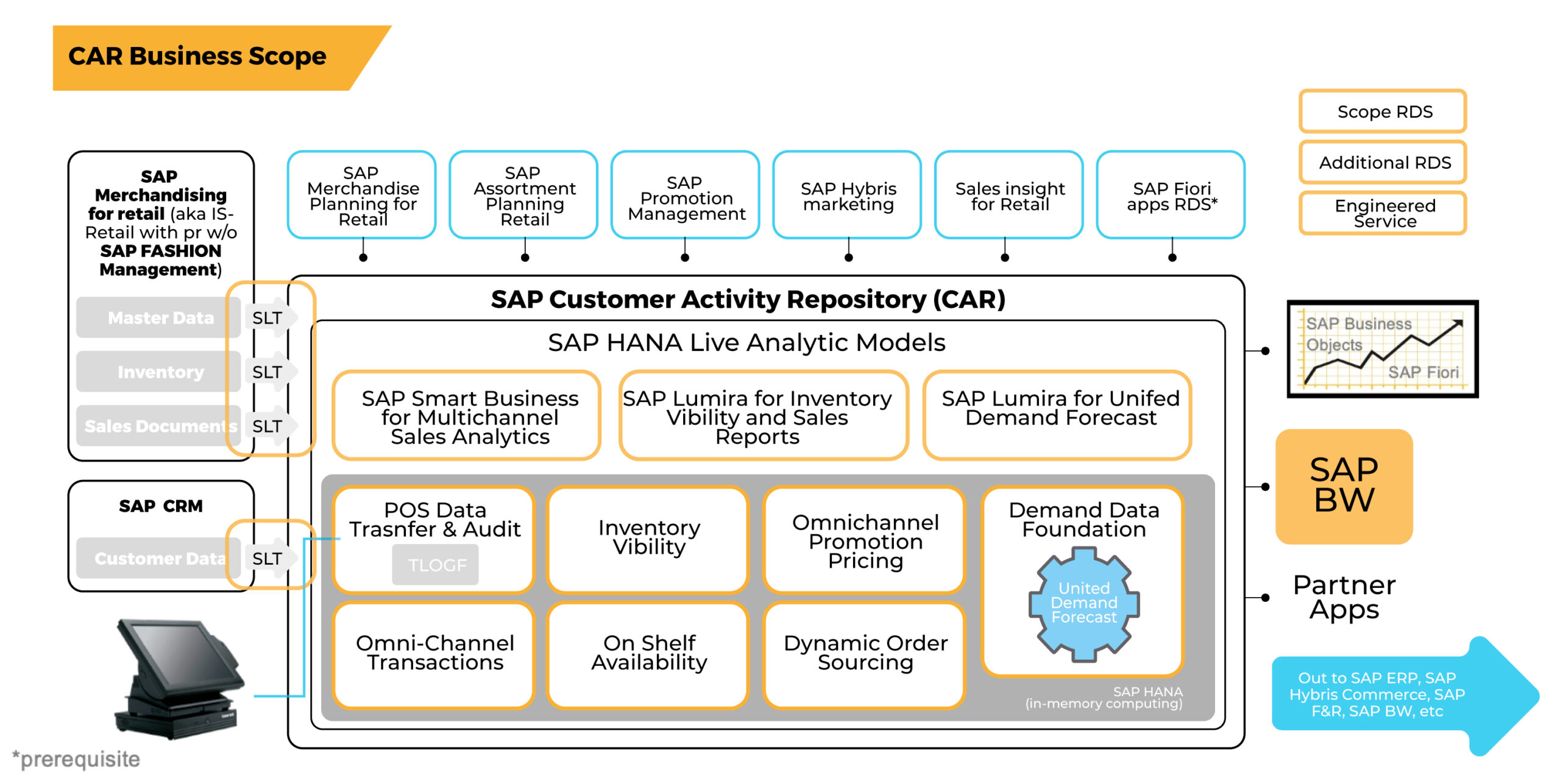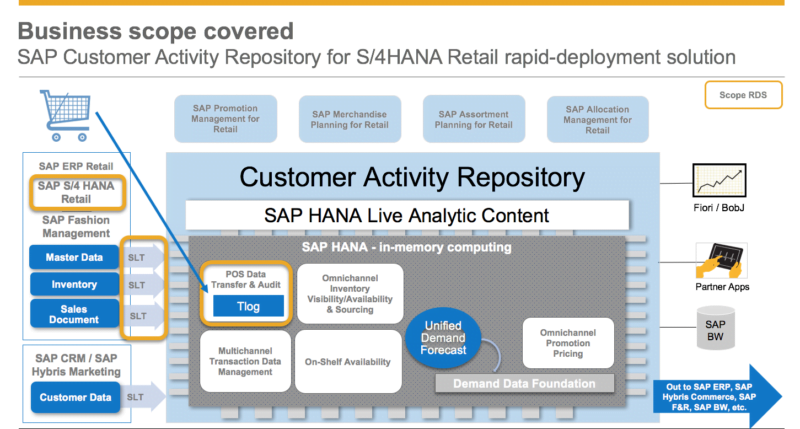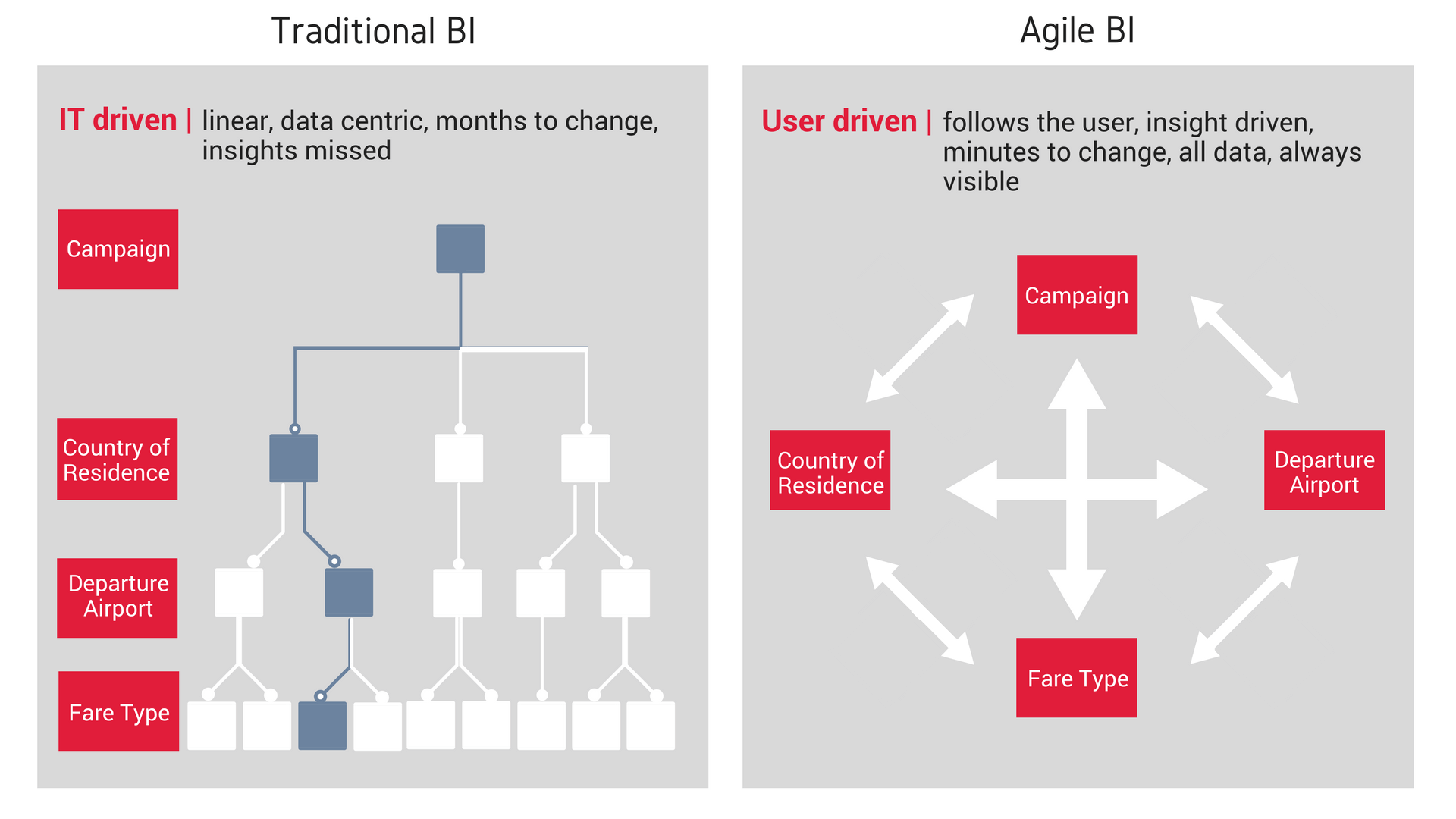SAP CAR Presentation
| Introduction to SAP CAR | ||
|---|---|---|
| SAP CAR stands for SAP Customer Activity Repository. It is a real-time data platform that collects customer and transaction data from various sources. SAP CAR provides retailers with a unified view of customer behavior and enables better decision making. | ||
| 1 | ||
| Key Features of SAP CAR | ||
|---|---|---|
| Real-time data integration: SAP CAR integrates data from various systems, such as POS, e-commerce, and loyalty programs, in real-time. Unified data model: It provides a single, harmonized data model for customer, transaction, and inventory data. Advanced analytics: SAP CAR offers advanced analytics capabilities, including predictive and prescriptive analytics, to derive meaningful insights. | ||
| 2 | ||
| Benefits of SAP CAR | ||
|---|---|---|
| Improved customer experience: With a unified view of customer data, retailers can personalize offers and recommendations, enhancing customer satisfaction. Enhanced inventory management: SAP CAR enables accurate inventory visibility, reducing stock-outs and optimizing replenishment. Better decision making: Real-time insights and analytics help retailers make informed decisions regarding pricing, merchandising, and promotions. | ||
| 3 | ||
| Architecture of SAP CAR | ||
|---|---|---|
| Data acquisition layer: Collects data from various sources, such as POS systems, loyalty programs, and social media. Data foundation layer: Stores and processes the collected data, ensuring data consistency and integrity. Analytics and applications layer: Provides advanced analytics and applications for reporting, forecasting, and decision-making. | ||
| 4 | ||
| Use Cases of SAP CAR | ||
|---|---|---|
| Personalized marketing: SAP CAR enables retailers to segment customers based on their preferences and behavior, allowing targeted marketing campaigns. Assortment optimization: By analyzing customer buying patterns, SAP CAR helps retailers optimize their product assortments. Fraud detection: Real-time data integration and advanced analytics in SAP CAR can detect and prevent fraudulent activities. | ||
| 5 | ||
| Implementation Considerations | ||
|---|---|---|
| Data quality: Ensuring data accuracy and cleanliness is crucial for successful SAP CAR implementation. Integration complexity: Integrating SAP CAR with existing systems can be complex and requires careful planning. Change management: Implementing SAP CAR involves organizational changes and user adoption, requiring effective change management strategies. | ||
| 6 | ||
| Deployment Options for SAP CAR | ||
|---|---|---|
| On-premise: SAP CAR can be deployed on-premise, providing full control over infrastructure and data. Cloud: SAP CAR is available as a cloud-based solution, offering scalability, flexibility, and reduced maintenance efforts. Hybrid: Retailers can opt for a hybrid deployment, combining on-premise and cloud solutions based on their specific needs. | ||
| 7 | ||
| SAP CAR vs. Traditional BI Tools | ||
|---|---|---|
| Real-time insights: Unlike traditional BI tools, SAP CAR provides real-time data integration and analytics, enabling faster decision-making. Retail-specific functionalities: SAP CAR offers retail-specific features, such as inventory management and personalized marketing, tailored to the industry's needs. Unified data model: SAP CAR provides a single, integrated data model, eliminating data silos and ensuring data consistency. | ||
| 8 | ||
| SAP CAR Success Stories | ||
|---|---|---|
| Adidas: By implementing SAP CAR, Adidas gained real-time visibility into customer behavior, leading to improved inventory management and personalized marketing. Ahold Delhaize: The retailer used SAP CAR to optimize its assortment, resulting in reduced out-of-stock situations and increased sales. Levi Strauss & Co: Levi Strauss leveraged SAP CAR to enhance its omnichannel capabilities and deliver a seamless customer experience. |  | |
| 9 | ||
| References (download PPTX file for details) | ||
|---|---|---|
| SAP Customer Activity Repository (CAR) Overvi... SAP Customer Activity Repository (CAR). SAP.c... SAP CAR Success Stories. SAP. Retrieved fr... |  | |
| 10 | ||




